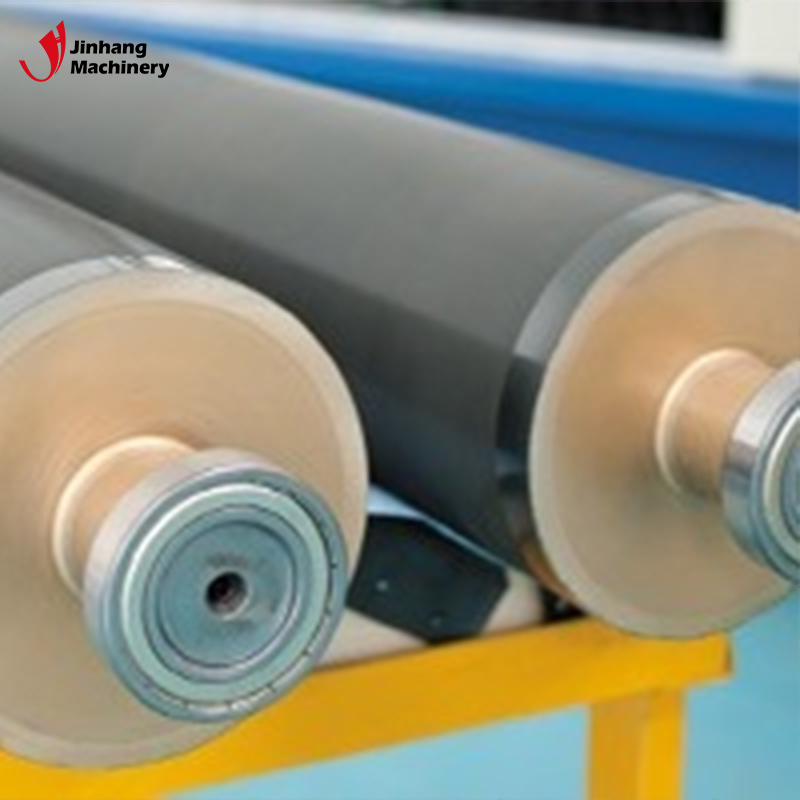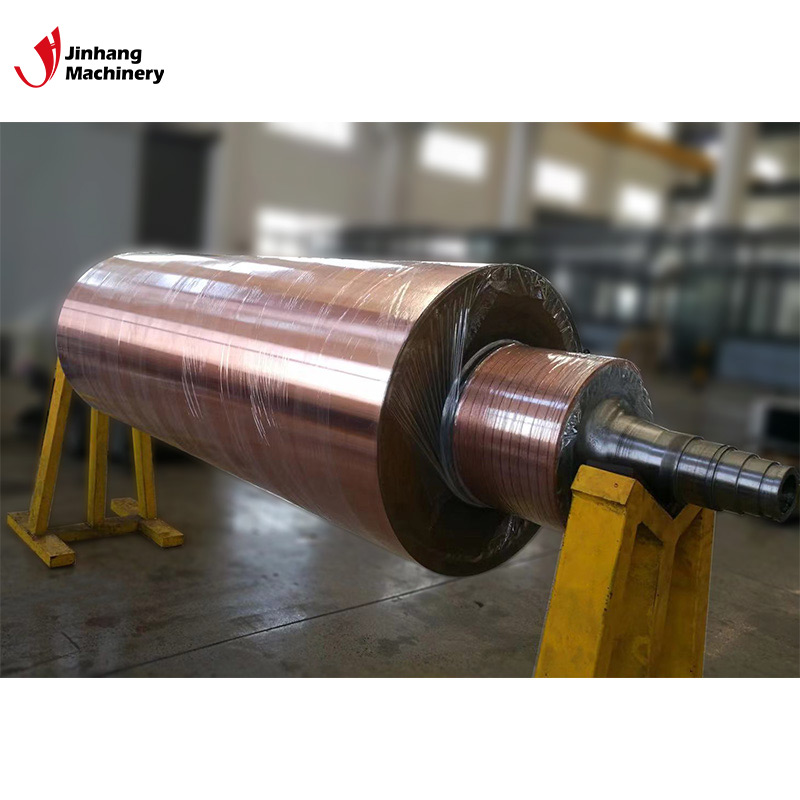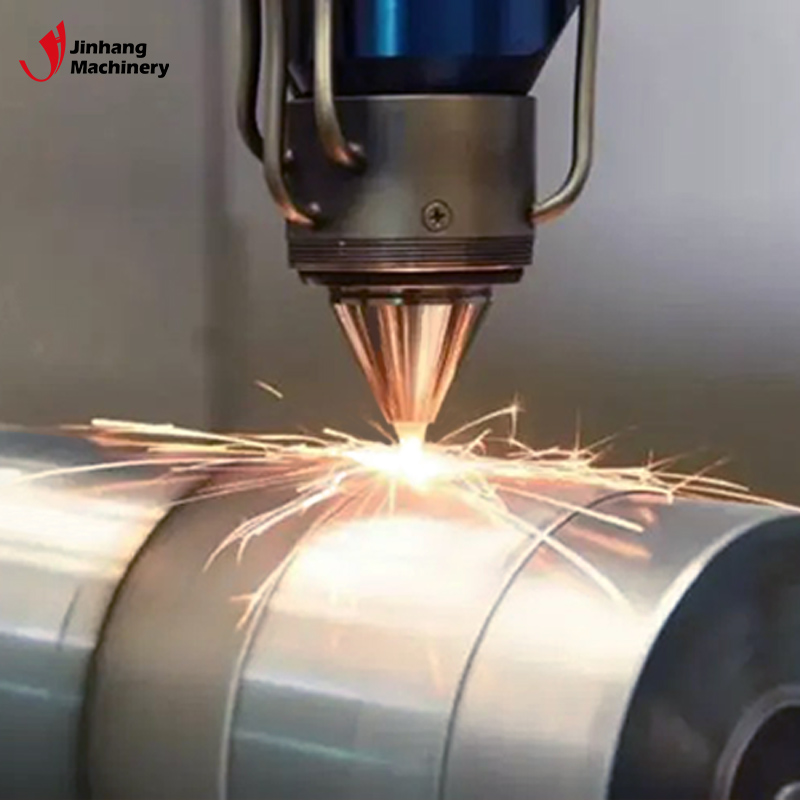What device can scrape off the ink on the Ceramic Anilox Roller?
In the printing, coating and packaging industries, the Ceramic Anilox Roller is one of the important core equipment. Its surface is covered with regular tiny reticulations to evenly transfer ink or coating. However, in actual operation, the reticulations on the surface of the Ceramic Anilox Roller will leave ink or other substances, causing blockage, affecting the ink transfer effect, and thus affecting the printing quality. Therefore, it is very important to keep the Ceramic Anilox Roller clean. So, what device can be used to effectively remove the ink remaining on the surface of the Ceramic Anilox Roller?
This article will conduct an in-depth analysis from the perspectives of the working principle, common types, and application effects of the scraping device to help manufacturers choose the most suitable scraping device to ensure production quality.

1. What is a scraper? How does it work?
The scraper is a device specifically used to scrape off excess ink on the surface of the anilox roller. It is a commonly used tool in the cleaning process of the Ceramic Anilox Roller. The scraper is installed on the printing machine or coating machine. It gently touches the surface of the anilox roller at a fixed angle to scrape the residual ink from the anilox groove, thereby ensuring the accuracy and uniformity of the ink transferred by the anilox roller.
What are the materials of the scraper?
The scraper is usually made of metal or composite materials with strong wear resistance, such as steel, stainless steel, tungsten carbide, etc. Some scrapers are also made of high-density polymer materials, which are suitable for some work occasions where the hardness of the tool is not high. These materials need to have sufficient hardness and elasticity to effectively remove excess ink on the surface without damaging the anilox roller.
How do the angle and installation method of the scraper affect the cleaning effect?
The installation angle of the scraper directly affects the effect of scraping ink. Generally speaking, the angle of the scraper is more common between 25° and 35°, which can ensure sufficient cleaning power and reduce wear on the anilox roller. In addition, the pressure of the scraper installation should also be moderate. If the pressure is too high, it may cause damage to the surface of the anilox roller; if the pressure is too low, it will affect the cleaning effect.
2. Why is laser cleaning equipment becoming more and more popular?
Laser cleaning equipment has received more and more attention in the field of industrial cleaning in recent years. Compared with the traditional scraper cleaning method, laser cleaning equipment has unique advantages in removing ink from the surface of Ceramic Anilox Roller.
What is the principle of laser cleaning?
Laser cleaning is a non-contact cleaning technology. The laser beam acts on the surface of the anilox roller through precisely adjusted pulses. When the ink or other substances absorb the laser energy, they are quickly vaporized and effectively removed. This cleaning method will not cause mechanical damage to the Ceramic Anilox Roller, so laser cleaning has a high application value for the printing industry with high precision requirements.
Is laser cleaning equipment suitable for all types of inks?
Laser cleaning has certain requirements for the type of ink and the material of the anilox roller. Generally speaking, laser cleaning equipment has a better cleaning effect on water-based inks and UV inks, but for some inks with special chemical compositions, the cleaning effect of lasers may be discounted. Therefore, when choosing laser cleaning equipment, it is necessary to determine the applicability of laser cleaning according to the actual application scenario.
3. How does ultrasonic cleaning equipment remove ink from the surface of anilox rollers?
Ultrasonic cleaning equipment is also widely used in industrial cleaning. It uses tiny bubbles generated by ultrasonic vibration to remove ink, which is another important way to clean Ceramic Anilox Roller.
What is the working principle of ultrasonic cleaning?
Ultrasonic cleaning uses high-frequency vibration of ultrasonic frequency to vibrate tiny bubbles in the cleaning liquid to the surface of Ceramic Anilox Roller. When these bubbles burst on the surface of the anilox roller, the tiny impact force generated shakes the ink particles off the surface. This non-contact cleaning method can avoid wear on the surface of the anilox roller and is particularly suitable for cleaning tasks with high precision requirements.
How to choose ultrasonic cleaning equipment?
When choosing ultrasonic cleaning equipment, it is necessary to select it based on factors such as the size of the anilox roller, the characteristics of the ink, and the required cleaning frequency. Generally speaking, the higher the frequency of ultrasonic equipment, the better the cleaning effect, but the cost of the equipment is relatively high. In addition, ultrasonic cleaning equipment has certain requirements for cleaning fluid, and usually uses specific solvents to ensure the cleaning effect while reducing corrosion to the anilox roller.

4. How to use chemical cleaning agents for manual cleaning?
Chemical cleaning agents are a common manual cleaning method. Compared with mechanical scrapers and laser cleaning, chemical cleaning agents have lower cleaning costs, but they require manual operation and safety precautions during cleaning.
What are chemical cleaning agents? How do they work?
Chemical cleaning agents are solvents specifically used to decompose ink and other residues. The ingredients of cleaning agents are usually some neutral or weak acid and alkaline chemicals, which can remove residual ink on the surface without damaging the Ceramic Anilox Roller. When using, the cleaning agent can be evenly applied to the surface of the anilox roller by soaking or spraying, and then wiped with a soft brush or cleaning cloth to achieve effective cleaning.
Will chemical cleaning agents corrode the anilox roller?
Although most chemical cleaning agents are neutral or weakly acidic and alkaline, long-term use may still cause slight corrosion to the surface of the anilox roller. Therefore, strong acid or alkaline solvents should be avoided when selecting cleaning agents. In addition, the use of chemical cleaning agents also requires safety precautions to avoid direct human contact with chemicals.
5. Is the compressed air cleaning device suitable for cleaning the Ceramic Anilox Roller?
Compressed air cleaning device is a relatively simple cleaning method. It uses high-pressure air to blow away the ink particles on the surface of the Ceramic Anilox Roller. It is mainly suitable for relatively slight ink residues on the surface.
What are the advantages and disadvantages of compressed air cleaning?
The main advantages of compressed air cleaning devices are fast cleaning speed and easy operation, but the disadvantage is that the cleaning effect is not thorough enough, and it is difficult to effectively clean the ink in the deep anilox. Therefore, compressed air cleaning devices are more used for temporary cleaning rather than thorough cleaning.
Is the compressed air cleaning device suitable for high-precision anilox rollers?
For some high-demand precision printing industries, compressed air cleaning may be difficult to meet the cleaning effect requirements. Especially for ink that has dried on the surface, the effect of compressed air is relatively poor. Therefore, when choosing a compressed air cleaning device, it is necessary to make a judgment based on the specific production situation and cleaning needs.

6. How to judge which cleaning device is suitable for your production needs?
Choosing a suitable cleaning device is of great significance to ensuring production efficiency and product quality. Different cleaning devices have their own advantages and limitations. Therefore, when choosing, you should start from actual needs and comprehensively consider factors such as cleaning effect, cost, safety and maintenance requirements.
How to consider the selection of cleaning equipment from a cost perspective?
The initial investment of laser cleaning equipment and ultrasonic cleaning equipment is high, but it can reduce downtime maintenance costs in long-term use; while the cost of scrapers and chemical cleaning agents is low, but they require manual operation, which increases labor costs and operating difficulties. Therefore, when choosing, the most cost-effective cleaning equipment should be selected according to the production scale and capital budget.
How does safety affect the selection of cleaning equipment?
Laser cleaning and ultrasonic cleaning are non-contact cleaning, which are relatively safe; while the use of chemical cleaning agents requires special attention to safety protection to prevent chemicals from causing harm to operators. Therefore, for enterprises with higher safety requirements, non-contact cleaning devices are a better choice.

